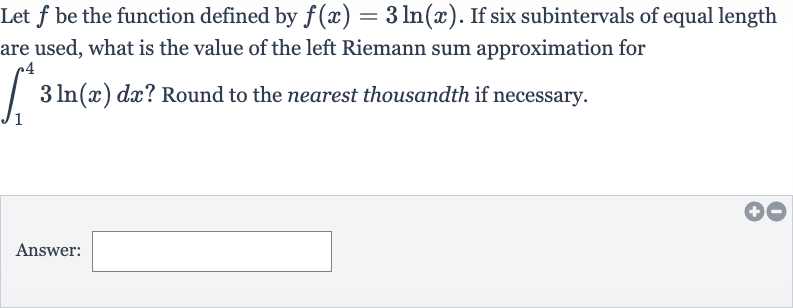Full solution
Q. Let be the function defined by . If six subintervals of equal length are used, what is the value of the left Riemann sum approximation for ? Round to the nearest thousandth if necessary.Answer:
- Determine Subinterval Width: To approximate the integral of from to using a left Riemann sum with six subintervals, we first need to determine the width of each subinterval. The interval has a length of . Dividing this interval into six equal parts gives us a subinterval width of .
- Identify Left Endpoints: Next, we identify the -values at the left endpoints of each subinterval. Starting from , we increase by the subinterval width of until we reach just below the upper limit of . The left endpoints are therefore and .
- Evaluate Function Values: Now we evaluate the function at each of these left endpoints. This gives us the following values:,,,,,.
- Calculate Areas of Rectangles: We then multiply each function value by the width of the subintervals () to get the area of each rectangle in the Riemann sum approximation. This results in the following areas:,,,,,.
- Sum All Areas: We calculate the areas using the function values from the previous step:,,,,.
- Calculate Left Riemann Sum: Finally, we sum all the areas to get the left Riemann sum approximation:.
- Calculate Left Riemann Sum: Finally, we sum all the areas to get the left Riemann sum approximation: We perform the calculations to find the numerical value of the left Riemann sum:

